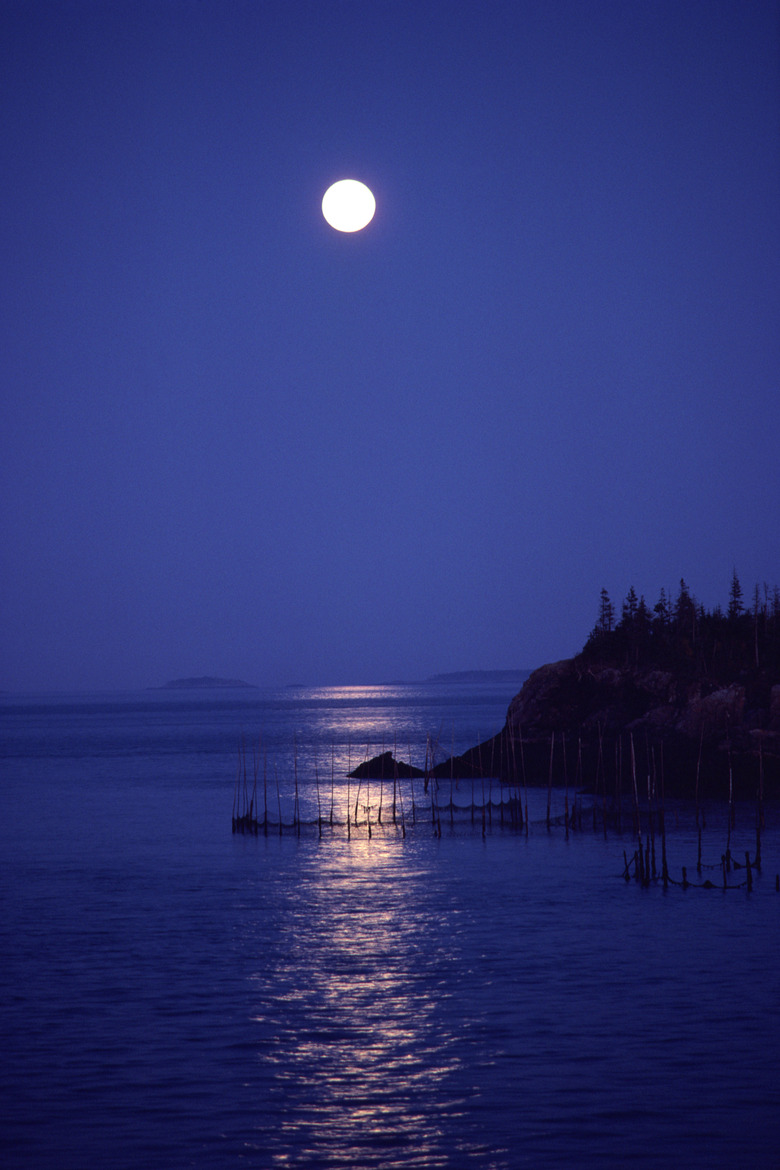Explanation Of The Tides And Moon
Even though the moon circles the Earth at an average distance of 378,000 kilometers (234,878 miles), its gravity still has a noticeable effect on the planet. The moon's gravitational pull is the major driving force behind the ocean's tides, raising and lowering ocean levels and contributing to the flow of water around the globe. In areas like the Bay of Fundy in Canada, the moon's effects shift water levels by as much as 16 meters (53 feet) during a single cycle.
Gravitational Effect
Gravitational Effect
When the moon is directly overhead any point on the Earth, its gravity pulls on the surface. This force pulls water toward the moon, creating a "sublunar" high tide on that side of the planet. As the water flows toward the moon, it draws water from the sides of the planet perpendicular to the moon's position, creating low tides. The gravitational pull is strongest on water, but the moon's gravity tugs at the Earth as well, causing the two bodies to accelerate toward each other and creating a 30-centimeter (about 1 foot) shift in the Earth's solid surface.
Antipodal Tide
Antipodal Tide
On the other side of the planet, the moon's gravitational effect is weakest, blocked by the mass of the Earth. In addition, the planet is slightly accelerating toward the moon on the opposite side, pulling the mass of the Earth away from the water on the far side. These effects combine to create an "antipodal" high tide on the side opposite the moon. Because the moon orbits every 24 hours and 50 minutes, each point on Earth receives two high tides each day, 12 hours and 25 minutes apart.
Variations
Variations
While the moon's gravitational force remains constant, its distance from the surface of Earth does not. The moon's orbit varies by almost 50,000 kilometers (31,000 miles) over the course of its path, and when the moon is closest, the sublunar tide is highest. In addition, geographic features affect the flow of water, contributing to differences in high tide levels over the course of the lunar cycle.
Solar Influence
Solar Influence
The moon is not the only body that affects the tides. The sun, though much farther away, has its own gravitational influence, raising and lowering water levels appropriately over the course of a year. When the moon's gravitational pull lines up with the sun's effect, it can significantly increase tidal variations, causing "spring" tides. When these two forces are perpendicular to one another, they reduce the tidal differences, creating "neap" tides. The Earth's distance to the sun also varies over the course of a year, increasing or decreasing this effect accordingly.
Cite This Article
MLA
Kazmeyer, Milton. "Explanation Of The Tides And Moon" sciencing.com, https://www.sciencing.com/explanation-tides-moon-19913/. 24 April 2017.
APA
Kazmeyer, Milton. (2017, April 24). Explanation Of The Tides And Moon. sciencing.com. Retrieved from https://www.sciencing.com/explanation-tides-moon-19913/
Chicago
Kazmeyer, Milton. Explanation Of The Tides And Moon last modified March 24, 2022. https://www.sciencing.com/explanation-tides-moon-19913/
